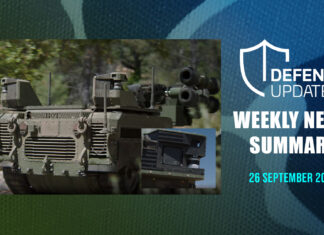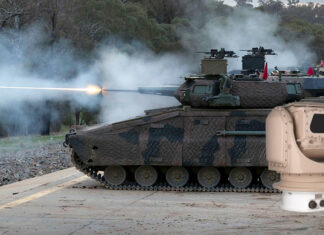The Automated Deep Operations Coordination System (ADOCS) is one example of a joint mission management software application. The concept originated as a DARPA Program and evolved into the “go to war” automated support system for deep operations in several theaters. The US Army is using over 5,000 such systems worldwide.
ADOCS is also a major segment of the intelligence application package for Theater Battle Management Core System (TBMCS) functionality at wing and squadron level. Deployed to the smallest detachments and all the way up to the Combined Joint Task Force Headquarters, ADOCS shares a Common Operational Picture through all users. The system enables joint planning, coordinating, and executing with horizontal and vertical integration across the joint battle space.
Enabling the service level commander and staff to allocate critical air resources in an efficient way, the Air Tasking Order (ATO) planning and execution tools are optimizing the employment air assets, improving the flow of information for identification, assignment, and nomination of targets. The process provides early assessment of potential and planned missions. The center monitors ATO execution through all phases and provides immediate visibility into air nominations throughout the targeting process, including distributed 8- and 4-hour updates to allow for detailed target validation prior to strike. ADOCS also supports analysis to assess the changes and movements of the Fire Support Coordination Line (FSCL) on current and planned missions in the ATO. It provides immediate visibility of targets exposed or covered by movements in the FSCL. Situational awareness is provided by battlespace visualization functions to support faster, accurate deep attack planning, and battle space assessment. Tools provide visualization of coordination measures, ingress and egress routes, and air defense threats. Friendly fires are shown in 3D space over any area to effectively deconflict dangerous situations. Battlefield geometries can also be overlaid with imagery and terrain data to improve situation awareness and planning. No Strike List (NSL) and Restricted Targets List (RTL) are constantly referenced in all phases of mission development to eliminate potential to collateral damage and fratricide.
Key integration functions within ADOCS are Joint Time Sensitive Target management, The Joint Time Sensitive Targets Manager (JTSTM) in ADOCS allows for target creation, vetting, coordination, and execution across the Joint Command structure. It is tailored to allow the Region Combatant Commander to use all of the weapons systems in the joint battle space to engage time sensitive targets. Another feature of ADOCS is the Intra-Air Operations Center Targets Management (ITM), provides a tool for the Air Operations Center (AOC) to coordinate and engage those targets which have a significant impact on the conduct of the air battle. The ITM allows the users to coordinate, deconflict, match aircraft to the target, and submit to Theater Battle Management Core System (TBMCS) the request for a change to the Air Tasking Order (ATO). The digital coordination and deconfliction features of this manager greatly reduce detect to destroy times for AOC critical targets. The ITM is also capable of linking its mission data to the Joint Time Sensitive Target (JTST), Intelligence Surveillance and Reconnaissance (ISR), and Fires managers in ADOCS for joint visibility and engagement.
ADOCS supports coordination of certain air space through it is Airspace Coordination Request (ACR) manager. The ACR Manager can conduct time and altitude, zone and corridor deconfliction. ADOCS also allows air space requests to be modified and coordinated across boundary lines and through the echelons. The ACR manager is also seamlessly integrated with the Tactical Airspace Integration System (TAIS) for airspace management and visibility. ADOCS can display the Airspace Control Order (ACO) from both TAIS and TBMCS and constantly compares missions against the protected airspace to alert the users of potentially dangerous conflicts. The Combat Search and Rescue (CSAR) manager in ADOCS allows the local rescue coordination center to plan, coordinate, and execute search and rescue operations across the joint battlefield. By consolidating all of the critical information elements into an in-depth mission roll-up, the agencies involved in Personnel Recovery are able to view and track the progress of the recovery operation. ADOCS uses the ATO to automatically recommend recovery assets for direct pairing with a particular mission. The CSAR manager also allows dynamic tasking of other assets to assist in the recovery operation.
ADOCS contains mission managers that allow the user to coordinate and execute indirect fires including tube artillery, multiple launch rocket systems, ship fired missiles, and coordinated engagements on seaborne Special Operations Forces. Not only does ADOCS have the ability to weapon-target pair and begin the engagement process, it always performs conflicts checks against the targets to ensure there is no unnecessary collateral damage or fratricide. The system supports Counterfire Common Operational Picture (CF-COP) functions providing a near real-time picture of the artillery battle. It allocates tube and rocket counter-battery resources for more efficient counterfire operations through digital integration at multi-echelons; from joint/combined level down to tactical firing units. CF-COP also includes munitions allocation and weapon system status. Weapon-target pairing provides improved use of available munitions to maximize lethality while conserving time and munitions for follow-on engagements.
The Intelligence, Surveillance, and Reconnaissance Manager in ADOCS allows the intelligence community to coordinate multiple collection platforms in a synchronized collection effort on the target. Following the cross-queue collection effort, ADOCS has the ability to pass the mission to its other target execution managers. Similarly, the JTST and ITM managers in ADOCS can send missions to the ISR Manager for detailed collection prior to determining the execution course of action.



















